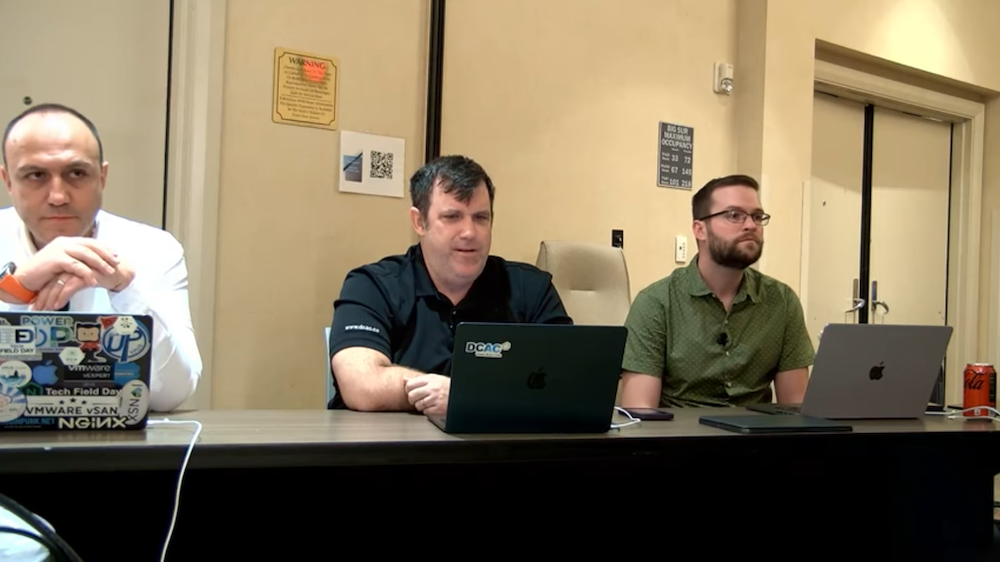The IT is a fast-paced industry where trends move fast, entering and exiting through a revolving door. Some catch on and stay around a few years, others vaporize like they never were. Then some trends make comebacks and gain traction the second time around. But computing paradigms like the edge and cloud are for the ages because even though they may be slow to catch on, they are here to stay, and give the future of the industry shape and form.
In October’s Tech Field Day event, Stephen Foskett and the panelists convened for a delegates’ round-table discussion to talk about edge and address some of the questions that are floating around about edge computing. Edge Computing Past and Future Tech Field Day 26 Roundtable explores the world of edge computing through the timeline from when it didn’t have a name to the present and what it’d look like in the future.

Is the Edge Another Ephemeral IT Trend or Something More?
I think it’s safe to say that in 2022, the edge is real. That fact is unassailable. And part of that is because remote work is a standard model now, much like in-office working was, pre-pandemic. This shift has immensely bolstered the formation of edge as an ecosystem and the proliferation of the family of edge technologies.
But in order to grasp how real the edge is, one needs to understand that since the edge spun out of cloud, it is not to be seen as the future replacement of cloud, and that’s precisely why the edge is coming together so well. The edge may have born out of cloud, but the cloud and edge are not rivals- they are complementary.
Also, the advent of edge is often mixed up with the advent of IoT because the two are so tightly coupled, but edge computing has been around a long time, way before IoT came. Case-in-point, WiFi access points. Over time, the edge has been redefined from something at the networks’ end to anything outside of the datacenter. Today the edge is everywhere, at home, in workplaces, at retail stores, in public places.
From Then to Now
The panel revisits the past of edge computing, especially the time before the pandemic when cloud was the king. Enrico Signoretti says, “A few years ago remote workers were not so many. Post-pandemic, enterprises have adopted edge technologies like the SAS widely. So now there is this continuous expansion towards the far edge and it’s changing everything.”
While the remote work culture may have propelled edge computing into the mainstream, there’s still some skepticism around the edge being another trend born out of the need for the public to move on from cloud to the next big thing.
There may be some truth in that in terms of users’ psychology, but the edge is coming together because of the undeniable reason that there is a massive need for it in customers. Vendors that did not have edge servers up until a few years are now investing in setting up their respective edge sites because the demand for it is growing every day. The AWS Wavelength is a good example of that.
But, edge computing at present does not have an overflowing number of management solutions. The paradigm is undoubtedly maturing but it’s not yet at a state where there’s a complete portfolio of solutions to choose from where management is concerned.
But even in its current form, things that are achieved at the edge is nothing short of magical. Think of autonomous vehicles, smart grid or patient monitoring in hospitals, quality monitoring in the manufacturing industry, and satellites in space – all of that has been made possible because of edge computing.

The Road Ahead
So, what’s next? The answer to that can be summed up in the wild transition of computing from mainframe days to today. Edge has ways to go in the coming years, and being fueled by some of the hottest and most advanced technologies of this decade, that journey will be an exciting one to say the least.
While inventions like 5G, AI and Metaverse give the edge its muscles, new and life-changing use cases will give it firepower to translate futuristic possibilities into real, usable smart technologies. Going forward, we’ll see a lot more activities in this space, especially from vendors that have so long been occupied with cloud.
Wrapping up
As companies continue to explore the possibilities trapped inside edge computing, the definition of edge evolves. Today, the edge is the network’s edge, but it is also the manufacturer’s factory floors, mobile things like self-driving cars, diagnostic machines in hospitals, and the satellites scouting the outer space. That is a clear indication that the edge is anything but static. It will continue to grow and change as distributed network changes and along the way, dish out many milestone technologies.
Give a listen to the Edge Computing Past and Future Tech Field Day 26 Roundtable from the recent Tech Field Day event for more enlightening facts about the edge. While you’re at it, also check out the On-Premise IT podcast- The Edge is Real This Time which is another illuminating discussion on the topic of edge.

